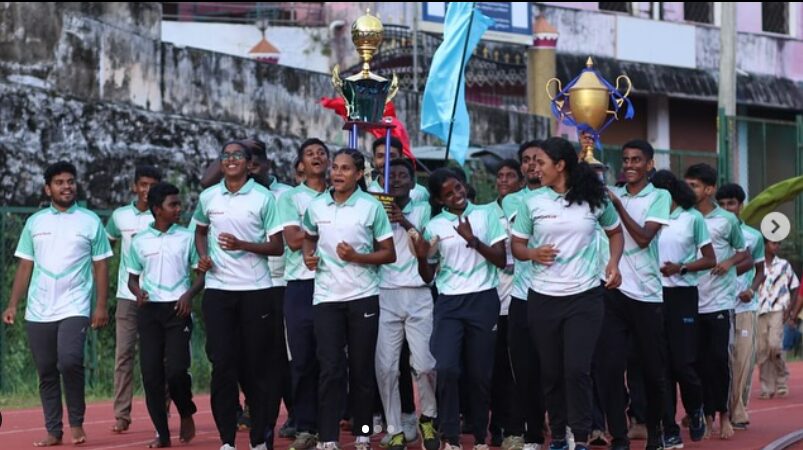Call Anytime +91-9212799477

Corporate Social Responsibility (CSR) Initiatives and Public-Private Partnerships in Grassroots Sports – Mr. Aswini Sahoo
Introduction
Grassroots sports play a crucial role in fostering community spirit, promoting physical health, and
nurturing young talent. In recent years, Corporate Social Responsibility (CSR) initiatives and public private partnerships (PPPs) have emerged as significant contributors to the development of grassroots
sports. These collaborations not only enhance sports infrastructure but also ensure inclusive access to
sports for all sections of society. This article explores the impact of CSR initiatives and PPPs on
grassroots sports, highlighting key examples and best practices.
The Role of CSR in Grassroots Sports
CSR initiatives by corporations have become a vital tool for promoting sports at the grassroots level.
Companies recognize the dual benefits of investing in sports: enhancing their brand image and
contributing to social welfare. CSR in sports encompasses a range of activities, including funding for
infrastructure development, training programs, and talent identification.
Infrastructure Development
One of the primary areas where CSR initiatives have made a significant impact is in the development
of sports infrastructure. Companies have invested in building and refurbishing sports facilities, ensuring
that athletes have access to world-class training environments. For instance, Central Coalfields Limited
has established sports academies that provide state-of-the-art facilities for young athletes. These
academies are equipped with modern amenities, including synthetic tracks, swimming pools, and
gymnasiums, which are essential for comprehensive training.
Moreover, companies like Tata Steel have also contributed to infrastructure development by building
multi-sport complexes in rural areas. These complexes not only cater to popular sports like cricket and
football but also include facilities for lesser-known sports such as archery and wrestling. By providing
such diverse infrastructure, CSR initiatives help in promoting a wide range of sports and encouraging
participation from different sections of society
Talent Identification and Training Programs
CSR initiatives often focus on identifying and nurturing young talent. Companies collaborate with sports authorities and local communities to organize training camps and talent hunts. IndusInd Bank, for
example, has supported para-athletes by funding their training and participation in international
competitions. Such initiatives not only help in discovering new talent but also provide opportunities for
underprivileged athletes to excel.
In addition to financial support, companies also provide technical expertise and coaching. For instance,
Reliance Foundation has partnered with international sports organizations to bring in expert coaches
and trainers. These professionals conduct workshops and training sessions, ensuring that young
athletes receive high-quality coaching from an early age. This holistic approach to talent development
helps in creating a robust pipeline of skilled athletes who can compete at national and international
levels.
Promoting Inclusivity
CSR initiatives promote inclusivity by offering equal opportunities to all, regardless of socio-economic
background. By investing in grassroots sports, companies help break down social barriers and foster a
sense of community. This inclusivity is crucial for creating a more harmonious and integrated society.
For example, the JSW Group has launched the ‘Sports for All’ program, which aims to provide sports
training to children from marginalized communities. The program includes free coaching, access to
sports facilities, and nutritional support. By addressing the financial and logistical barriers that often
prevent underprivileged children from participating in sports, such initiatives ensure that talent is
nurtured irrespective of socio-economic status.
Public-Private Partnerships in Grassroots Sports
Public-private partnerships (PPPs) have emerged as an effective model for developing sports
infrastructure and programs. These collaborations leverage the strengths of both the public and private
sectors to create sustainable sports ecosystems.
Shared Resources and Expertise
PPPs combine the resources and expertise of government bodies and private companies. Local
governments often provide land and tax incentives, while private companies bring in financing and
management expertise. This synergy ensures efficient project execution and long-term sustainability.
For instance, the partnership between the Government of Odisha and Tata Steel has led to the
development of the Kalinga Stadium in Bhubaneswar. This state-of-the-art facility has hosted several
national and international events, including the Hockey World Cup. The collaboration has not only
enhanced the sports infrastructure in the region but also boosted local tourism and economy.
Building Community Sports Centers
One of the key contributions of PPPs is the development of community sports centers. These centers
serve as hubs for various sports activities, providing training and competition facilities. They also act as
community venues, promoting social cohesion and physical activity.
For example, the partnership between the Delhi government and GMR Group has resulted in the
establishment of the GMR Sports Complex. This facility includes multiple sports arenas, training
centers, and recreational areas. It serves as a venue for local tournaments and community events,
encouraging residents to engage in physical activities and fostering a sense of community.
Capacity Building and Training Programs

PPPs play a crucial role in capacity building by organizing coaching clinics, workshops, and certification programs for coaches and sports administrators. These initiatives enhance the quality of coaching and ensure that young athletes receive professional training from an early age. The establishment of the National Sports Development Fund (NSDF) by MoYAS. This fund supports various capacity-building programs, including coaching certification courses and sports management workshops. By investing in the professional development of coaches and administrators, PPPs contribute to the overall improvement of the sports ecosystem.
Case Studies of Successful CSR and PPP Initiatives
Central Coalfields Limited Sports Academy
Central Coalfields Limited (CCL) has established sports academies that provide comprehensive training
facilities for young athletes. These academies focus on various sports, including athletics, football, and
archery. CCL’s CSR initiative has not only improved sports infrastructure but also provided opportunities
for underprivileged children to pursue their passion for sports.
The academies offer a holistic training program that includes physical conditioning, technical coaching,
and mental conditioning. Additionally, CCL provides scholarships and financial support to talented
athletes, ensuring that they can focus on their training without financial constraints. This comprehensive
approach has resulted in the emergence of several national-level athletes from these academies.
IndusInd Bank’s Support for Para-Athletes
IndusInd Bank has been a strong advocate for para-sports in India. Through its CSR initiatives, the
bank has funded the training and participation of para-athletes in international competitions. This
support has enabled many athletes to achieve remarkable success on the global stage, highlighting the
impact of targeted CSR efforts.
Targeted support like this not only helps athletes achieve their potential but also raises awareness about
para-sports and encourages more participation.
Public-Private Partnership in Sports Tourism
In the realm of sports tourism, PPPs have played a pivotal role in developing world-class sports facilities.
For instance, the collaboration between local governments and private companies has led to the
creation of sports complexes that host national and international events. These facilities not only boost
local economies but also promote sports tourism.
The partnership between the Kerala government and private investors has resulted in the development
of the Greenfield International Stadium in Thiruvananthapuram. This stadium has hosted several highprofile cricket matches and other sporting events, attracting tourists from across the country and abroad.
The influx of visitors has provided a significant boost to the local economy, demonstrating the economic
benefits of sports tourism.
Challenges and Future Directions
Despite the positive impact of CSR initiatives and PPPs, several challenges remain. Inadequate
funding, lack of awareness, and socio-cultural barriers often hinder the growth of grassroots sports. To
address these challenges, it is essential to:
- Increase Awareness and Engagement
Raising awareness about the benefits of sports and the role of CSR and PPPs is crucial. Companies
and governments should engage with local communities to promote sports participation and highlight
the opportunities available through CSR initiatives and PPPs. This can be achieved through community
outreach programs, sports festivals, and media campaigns. - Enhance Funding and Resource Allocation
Ensuring adequate funding for grassroots sports is vital. Companies should allocate a significant portion
of their CSR budgets to sports development, while governments should provide incentives for private
sector investment in sports infrastructure and programs. Additionally, innovative funding mechanisms,
such as crowdfunding and public donations, can be explored to supplement traditional funding sources. - Foster Collaboration and Partnerships
Collaboration between various stakeholders, including corporations, governments, non-profit
organizations, and local communities, is essential for the success of grassroots sports initiatives. By
working together, these stakeholders can create a more inclusive and sustainable sports ecosystem.
Regular forums and conferences can be organized to facilitate dialogue and knowledge-sharing among
stakeholders.
Conclusion
CSR initiatives and public-private partnerships have the potential to transform the landscape ofgrassroots sports. By investing in infrastructure, training programs, and talent identification, these collaborations can nurture young talent and promote inclusivity. As we move forward, it is essential to address the challenges and foster a culture of collaboration to ensure the continued growth and success of grassroots sports. Through sustained efforts and innovative partnerships, we can create a vibrant sports ecosystem that benefits individuals and communities alike.
Author – Mr. Aswini Sahoo
(Consultant-Adventure Sports , Grant Thornton Bharat LLP)
Privacy Policy | Terms & Conditions | Refund Policy
© Copyright 2024 by PEFINDIA.org | Designed & Developed By CraftyWebbies
